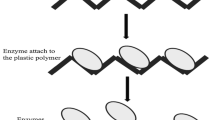Abstract
Goal, Scope and Background
Numerous xenobiotics released into surface waters are transferred to suspended particulate matter and finally attached to sediments. Aquatic organisms may be exposed to them by direct particle feeding, by physical contact with contaminated surfaces as an exposure route, and by the uptake of dissolved contaminants after equilibration via the free water phase. In order to assess potential sediment toxicity, each of these exposure routes has to be addressed. This paper presents a newly developed particle contact assay that uses the fermentation performance of a specific Saccharomyces cerevisiae strain for the assessment of toxic effects in sediments. The test procedure is based on the characteristic feature of growing yeast cells to attach to sediment particles, which are also relevant for the accumulation of contaminants. The physical contact with lipophilic contaminants mirrors an exposition pathway for the direct uptake into the cells. In order to quantitatively characterize the toxic effects of particle attached pollutants on the fermentation performance, unpolluted native reference sediment was spiked with representatives for widely distributed anthropogenic contaminants.
Methods
Saccharomyces cerevisiae was established as sensitive eukaryotic microorganism for the ecotoxicological assessment of particle attached anthropogenic contaminants in freshwater sediments. For this purpose, yeast cells were cultivated in sediment samples and the resulting fermentation performance was continuously measured. Sediments artifically spiked with HCB, PCB, g-HCH, DDT, and benzo(a)pyrene and solutions of each contaminant were comparatively investigated by means of their adverse effects on yeast fermentation performance. Additionally, four native river sediments characterized by increasing levels of pollution were assessed by the yeast particle contact assay, and simultaneously by standard aquatic tests with algae, daphniae, and luminescent bacteria using pore water and elutriates. Results of the bioassays were related to specific sediment contamination with respect to metals and organic priority pollutants.
Results and Discussion
In sediments spiked with PCB and benzo(a)pyrene fermentation, performance was affected extensively below concentrations inhibiting fermentation in contaminant solutions. This suggests a high efficiency of the exposure route by physical contact. The fermentation performance was only slightly affected by single lipophilic pollutants, whereas mixtures of individually spiked sediments caused critically reduced fermentation performance suggesting additive synergistic effects. Native river sediments modestly to critically polluted by hazardous organic compounds lead to a slightly to dangerously reduced fermentation performance in the yeast contact assay. These inhibitory effects were much less pronounced in the standard bioassays conducted with algae, daphniae and luminescent bacteria, applying pore waters and elutriates as sample matrices. Using pore water, inhibition was measured only in the most polluted sediment, elutriates lead to a slight inhibition of the algal growth in the undiluted sample only. These results indicate an improved sensitivity of the yeast particle contact assay compared to the standard assays, due to uptake and physical cell contact as additional routes of exposure.
Conclusion
The yeast particle contact assay is a valuable tool for the assessment of ecotoxicological potential in freshwater sediments. Since the assay addresses physical contact as an exposure route, it indicates bioavailability of lipophilic compounds in sediments.
Outlook
The sensitive indication of bioavailable contaminants associated to sediment particles by the newly developed yeast particle contact assay recommends it as a complementary microbial bioassay in a test battery for assessing major pathways of contaminants in whole sediments.
Similar content being viewed by others
Author information
Authors and Affiliations
Corresponding authors
Rights and permissions
About this article
Cite this article
Weber, J., Kreutzmann, J., Plantikow, A. et al. A Novel Particle Contact Assay with the Yeast Saccharomyces cerevisiae (8 pp). J Soils Sediments 6, 84–91 (2006). https://doi.org/10.1065/jss2006.05.154
Received:
Accepted:
Published:
Issue Date:
DOI: https://doi.org/10.1065/jss2006.05.154




